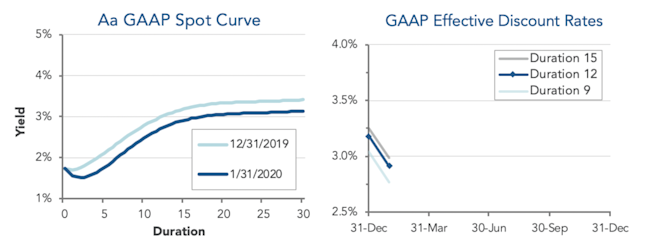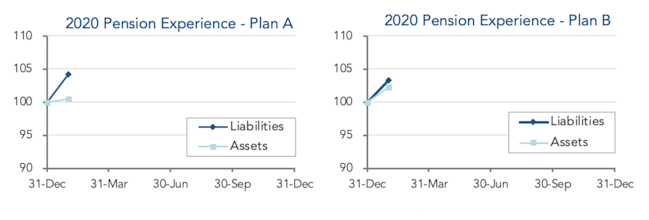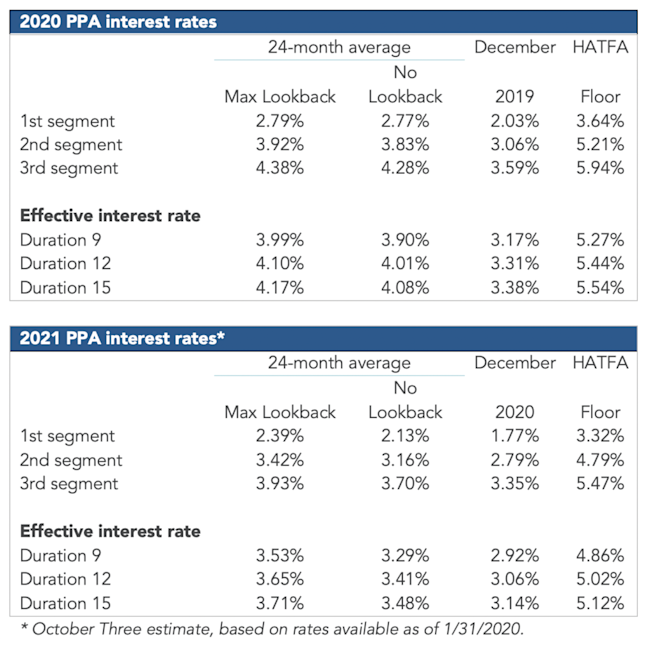
January 2020 Pension Finance Update
Pensions got clobbered in January, as stock markets mostly lost ground while interest rates reached new all-time lows. Both model plans we track[1] lost ground last month, with Plan A dropping 4% while the more conservative Plan B lost 1%:

Assets
Stock indexes, other than NASDAQ, lost ground last month, with a diversified stock portfolio falling more than 1%:

Treasury rates fell a stunning 0.4% in January and corporate bond yields fell more than 0.25% on rising credit spreads. As a result, bonds gained 4%-6% last month, with long duration and Treasury bonds performing best.
Overall, our traditional 60/40 portfolio gained less than 1% during January, while the conservative 20/80 portfolio earned more than 2%.
Liabilities
Pension liabilities (for funding, accounting, and de-risking purposes) are driven by market interest rates. The first graph below compares our Aa GAAP spot yield curve at December 31, 2019 and January 31, 2020. The second graph below shows our estimate of movements in effective GAAP discount rates for pension obligations of various duration during January:

Corporate bond yields moved down more than 0.25% in January. As a result, pension liabilities jumped 3%-5% during the month.
Summary
Pensions rallied late in 2019 as stocks and interest rates rose, but markets reversed ground in January, producing pain for pension sponsors. The graphs below show the movement of assets and liabilities during January 2020:

Looking Ahead
Pension funding relief has reduced required plan funding since 2012, but under current law, this relief will gradually sunset. Given the current level of market interest rates, it is possible that relief reduces the funding burden through 2028, but the rates used to measure liabilities will move significantly lower over the next few years, increasing funding requirements for pension sponsors that have only made required contributions.
Discount rates plunged last month. We expect most pension sponsors will use effective discount rates in the 2.7%-3.1% range to measure pension liabilities right now, the lowest rates on record.
The table below summarizes rates that plan sponsors are required to use for IRS funding purposes for 2020, along with estimates for 2021. Pre-relief, both 24-month averages and December ‘spot’ rates, which are still required for some calculations, such as PBGC premiums, are also included.

[1]Plan A is a traditional plan (duration 12 at 5.5%) with a 60/40 asset allocation, while Plan B is a largely retired plan (duration 9 at 5.5%) with a 20/80 allocation with a greater emphasis on corporate and long-duration bonds. We assume overhead expenses of 1% of plan assets per year, and we assume the plans are 100% funded at the beginning of the year and ignore benefit accruals, contributions, and benefit payments in order to isolate the financial performance of plan assets versus liabilities.
